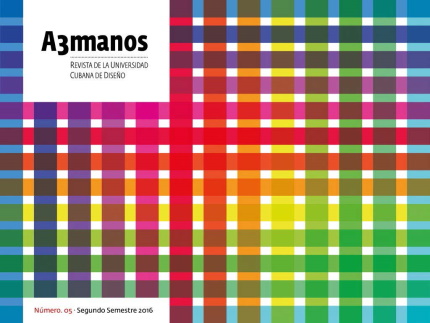Determination of the style of predominant learning in students of Industrial Design.
##plugins.themes.bootstrap3.article.main##
Abstract
The knowledge of the learning styles that prevail in the students can be useful to trace teaching strategies. For it, a diagnosis of the learning styles among students of the third year of the career of Industrial Design of the Superior Institute of Design (ISDi) of Havana based has been carried out on the pattern of Felder - Silverman that considers four dimensions, each one with two opposed categories. The instrument ILS was applied report-ed to samples of three serial courses. The non parametric test of Kruskal Wallis demonstrates that from the statistical point of view the behavior of the groups is similar. It is significant the behavior markedly visual that these students manifest.
##plugins.themes.bootstrap3.article.details##

This work is licensed under a Creative Commons Attribution-NonCommercial-ShareAlike 4.0 International License.
- Attribution — You must give appropriate credit , provide a link to the license, and indicate if changes were made . You may do so in any reasonable manner, but not in any way that suggests the licensor endorses you or your use.
- NonCommercial — You may not use the material for commercial purposes .
- No additional restrictions — You may not apply legal terms or technological measures that legally restrict others from doing anything the license permits.
- ShareAlike — If you remix, transform, or build upon the material, you must distribute your contribution under the same license as the original. NOTE: This point applies to numbers 1 to 20 of the magazine with the previous CC-BY-NC-SA 4.0 license. Does not apply to the new CC BY-NC 4.0 license from Volume 11, Number. 21 (2024).
References
Aguilera E., Ortiz E. (2001). Los perfiles de estilos de aprendizaje en estudiantes universitarios. Holguín: CECES.
Bahamon M., Vianchá M., Alarcón L., Bohorques C. (2012). Estilos y estrategias de aprendizaje: una revisión empírica y conceptual de los últimos diez años. Revista Pensamiento Psicológico 10, (1), 129 -144.
Di Bernardo J., Gauna, M. (2005). Determinación de los estilos de aprendizaje de bioquímica como paso inicial en la búsqueda de un aprendizaje significativo. Universidad del Nordeste, Comunicaciones Científicas y Tecnológicas.
Che J., Pérez O. (2008). Consideraciones sobre la estadística aplicada a la Investigación pedagógica. Ciudad Panamá.
Felder R, Silverman L. (1988). Learning and Teaching Styles in Engineering Education, Engr. Education, 78, (7).
Felder R., Soloman, B. (1998). Learning styles and stra- tegies. WWW.2.ncsu.edu/unity/lockers/users/f/felder/public/ ILSdir/ilsweb.html
Gallego D. (2013). Ya he diagnosticado el estilo de aprendizaje de mis alumnos y ahora ¿qué hago? Revista Estilos de aprendizaje, 11 (12).
Gómez L.(2004). Manual de estilos de aprendizaje: material auto instruccional para docentes y orientadores educativos. México: Secretaría de Educación Pública.
Huertas N., Garcés L. (2012). Estilos de aprendizaje y rendimiento académico ¿Importa el estilo de aprendizaje en el
rendimiento educativo? Boletín Redipe 803 de la Red Iberoamericana de Pedagogía.
Troiano H., Breitman M., Gete-Alonso C. (2004). Es- tilos de aprendizaje que predominan entre los estudiantes universitarios. Revista de enseñanza universitaria, (23).
Spiegel M. (1977). Teoría y problemas de estadística. La Habana: Editorial Pueblo y Educación.
Valadez, M. (2009). Estilos de aprendizaje y estilos de pensamiento: precisiones conceptuales. Revista de Educación y Desarrollo, (11).
Ventura A., Moscoloni Nora, Gagliardi R. (2012). Estudio comparativo sobre los estilos de aprendizaje de estudian- tes universitarios argentinos de diferentes disciplinas. Psicología desde el Caribe, 29, (2).
Ventura A., Palau I., Svéliga C., Anglone L. (2014). Estilos de aprendizaje y enseñanza en ingeniería: una pro- puesta de educación adaptativa para primer año. Revista de Educación e Ingeniería, 9 (18), pp 178 – 189.
Zapata M. y Flores L. (2008). Identificación de los estilos de aprendizaje en estudiantes universitarios. Revista Estilos de aprendizaje, 2 (2), 130 -148.






















